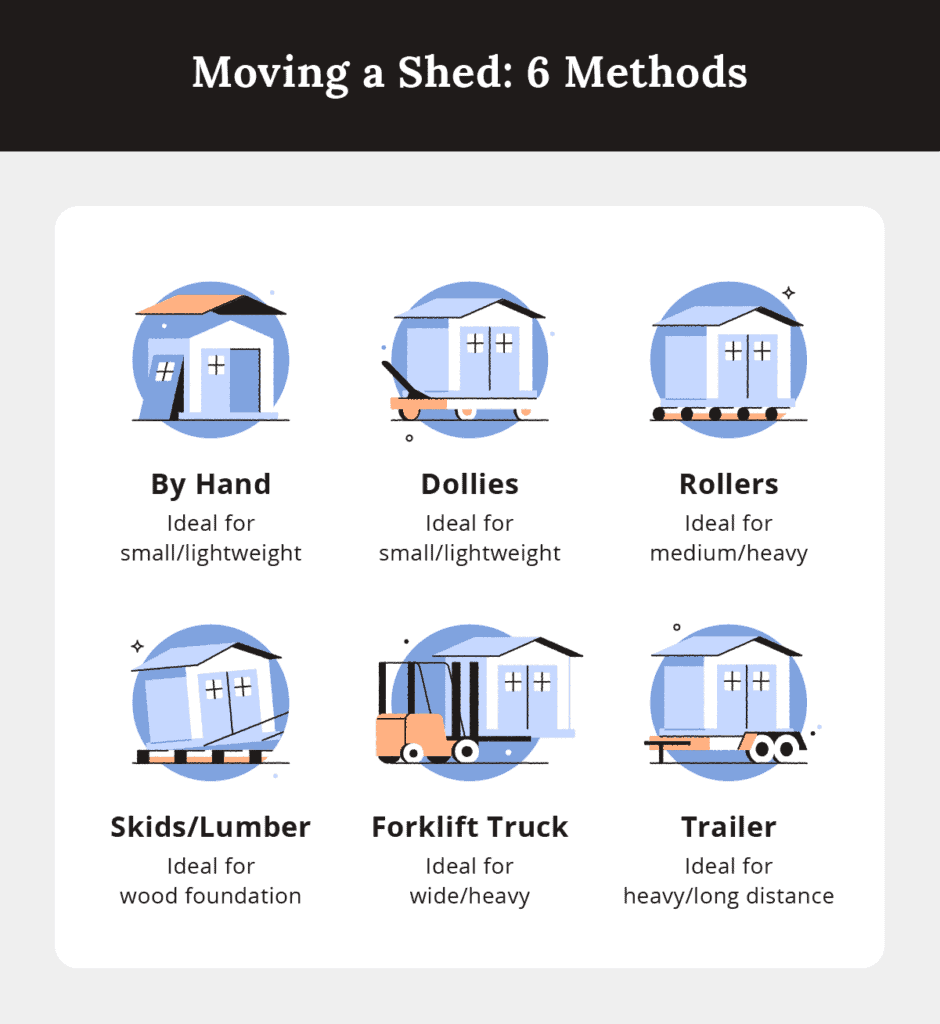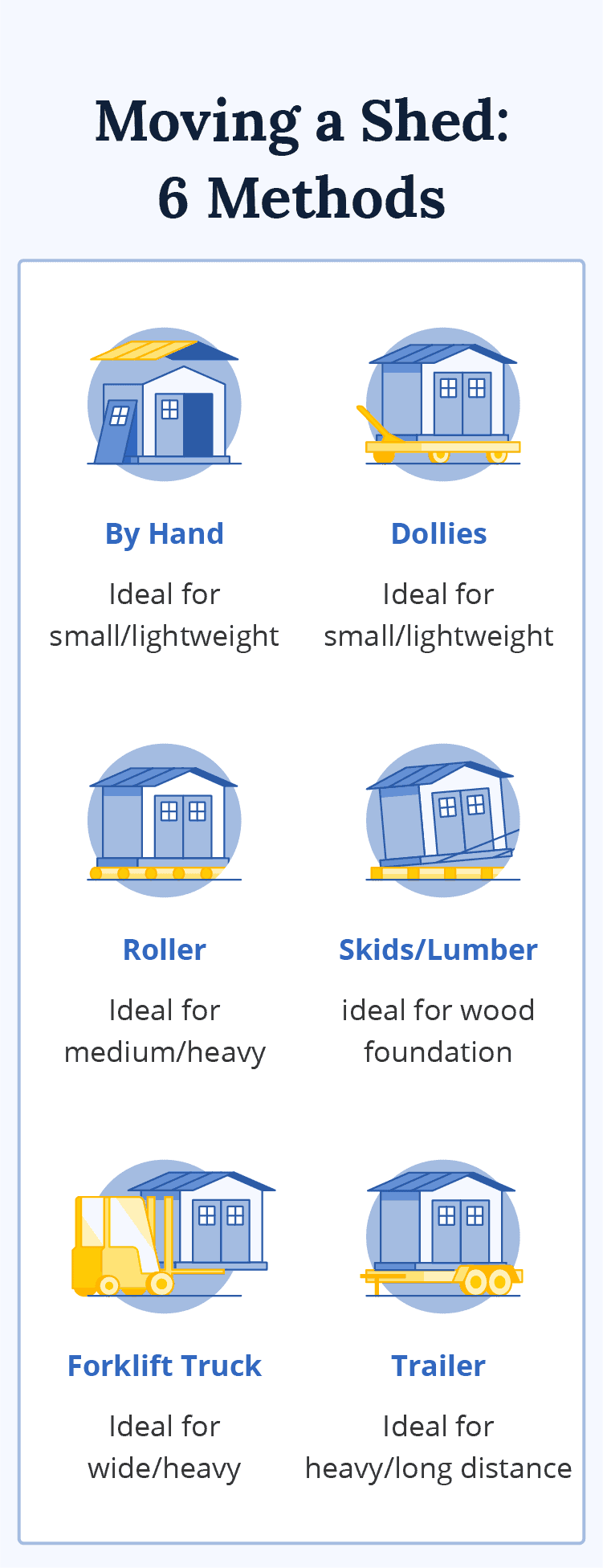Low battery
Battery level is below 20%. Connect charger soon.
How to Move a Shed Safely – Step-by-Step Without Breaking It
Moving a shed might seem like a daunting task, but with careful planning and execution, it’s entirely achievable. Whether you’re relocating your garden sanctuary to a sunnier spot or need to move it across your property, this comprehensive guide will walk you through the process step-by-step, ensuring your shed arrives at its new home intact and safe. We’ll cover everything from pre-move preparations to the final placement, minimizing the risk of damage and injury.
1. Assessment and Planning: The Foundation of a Successful Move
Before you even think about lifting a finger, a thorough assessment and meticulous planning phase is crucial. This is where you determine the feasibility of the move and prepare for the challenges ahead.
- Inspect the Shed:
- Structural Integrity: Carefully examine the shed’s walls, roof, floor, and foundation. Look for rot, cracks, loose boards, or any signs of weakness. A structurally compromised shed may not withstand the move. Address any minor repairs before you begin.
- Size and Weight: Estimate the shed’s size and weight. This will determine the necessary equipment, manpower, and method of transport. Research the materials used in your shed to get a rough estimate of its weight.
- Contents: Empty the shed completely. Remove all tools, equipment, and personal belongings. Secure or dispose of any hazardous materials.
- Plan the Route:
- Pathways: Map out the route your shed will take. Consider any obstacles, such as trees, fences, narrow gates, or uneven terrain.
- Accessibility: Ensure the new location is accessible for the chosen moving method (e.g., rolling, lifting).
- Permits: Check with your local authorities regarding permits required for moving structures.
- Choose Your Moving Method:
- Dismantling and Reassembly: This is the safest option for large or structurally weak sheds. It involves disassembling the shed piece by piece and reassembling it at the new location. This requires careful documentation (photos, diagrams) during disassembly.
- Skidding and Rolling: This method involves lifting the shed onto skids (beams) and rolling it using pipes or rollers. Suitable for smaller, sturdier sheds, and requires a relatively smooth surface.
- Lifting and Transporting: This is often the most complex method, involving lifting the shed with a forklift, crane, or other heavy machinery and transporting it. Best suited for sheds with a strong foundation and requires professional expertise.
2. Preparing the Shed for the Move: Strengthening and Securing
Once you’ve assessed the shed and chosen your method, it’s time to prepare the structure for the journey.
- Reinforcement:
- Internal Bracing: Add temporary bracing to the interior walls and corners to provide structural support during the move. Use lumber and screws to create a stable frame.
- External Strapping: Wrap the shed with heavy-duty straps or ratchet straps to hold the walls and roof together, preventing them from separating.
- Roof Security: If applicable, secure the roof to the walls using screws or nails. Consider temporarily removing the roof if it’s fragile or likely to be damaged.
- Foundation Preparation:
- Remove the Floor (If Necessary): If the shed is on a concrete slab or similar foundation, you may need to detach it, depending on your chosen method.
- Prepare for Skidding/Lifting: If using skids, attach them securely to the shed’s base. For lifting, identify the best lifting points, ensuring they can withstand the weight.
- Protecting Doors and Windows:
- Secure or Remove: Secure doors and windows to prevent them from swinging open during the move. Consider removing them altogether if they are fragile or poorly attached.
- Cover with Protective Material: Cover windows with plywood or cardboard to protect them from damage during transport.
3. Executing the Move: The Moment of Truth
This is where your planning and preparation pay off. Follow your chosen method carefully and prioritize safety.
- Skidding and Rolling:
- Lift the Shed: Use jacks or a come-along to lift the shed slightly off the ground.
- Position Skids: Slide the skids (beams) underneath the shed, ensuring they are evenly spaced and support the weight.
- Roll the Shed: Place pipes or rollers underneath the skids and gradually roll the shed along the prepared path. Have spotters guide the shed and ensure it remains stable.
- Steering: Use levers or pry bars to steer the shed around corners and obstacles.
- Lifting and Transporting:
- Professional Assistance: It’s highly recommended to hire professionals for this method. They have the necessary equipment and expertise.
- Secure Lifting Points: Ensure the lifting points are properly identified and reinforced.
- Controlled Lifting: Lift the shed slowly and steadily, keeping it balanced.
- Transport: Transport the shed to its new location, following all safety regulations.
- Dismantling and Reassembly:
- Document Everything: Take detailed photos and videos throughout the disassembly process. Label all parts clearly.
- Careful Removal: Remove parts systematically, starting with the roof, then the walls, and finally the floor.
- Safe Storage: Store the disassembled parts in a secure and organized manner.
- Reassembly: Follow your documentation to reassemble the shed at the new location.
4. Final Placement and Finishing Touches
Once the shed is in its new home, the job isn’t quite finished.
- Leveling: Ensure the shed is level and stable on its new foundation. Use shims to adjust for any unevenness.
- Foundation: Build a new foundation if necessary.
- Reattach Doors and Windows: Reinstall doors and windows, ensuring they fit properly.
- Final Inspections: Inspect the shed for any damage incurred during the move. Repair any issues promptly.
- Clean Up: Remove any debris and clean up the area.
Conclusion: A Successful Shed Relocation
Moving a shed is a project that requires careful planning, attention to detail, and a commitment to safety. By following these step-by-step instructions, you can significantly increase your chances of successfully relocating your shed without causing damage. Remember to assess your shed’s condition, choose the right moving method, and prioritize safety at every stage. If in doubt, don’t hesitate to seek professional assistance. With proper preparation, you can enjoy your shed in its new location for years to come.
Frequently Asked Questions (FAQs)
Q: What’s the best way to move a shed by myself?
A: For a solo move, dismantling and reassembling is often the safest option, especially for larger sheds. Alternatively, consider using a heavy-duty dolly or hand truck for smaller, lighter sheds. Always prioritize safety and don’t attempt anything beyond your capabilities.
Q: How much does it cost to move a shed professionally?
A: The cost varies widely depending on the size and weight of the shed, the distance of the move, the complexity of the terrain, and the chosen method. Expect to pay anywhere from a few hundred to several thousand dollars. Get multiple quotes from reputable movers.
Q: Can I move a shed on wheels?
A: Yes, if the shed is small and light enough, and you have a suitable trailer. Ensure the shed is securely attached to the trailer, and the load is balanced. Always obey all traffic laws and speed limits.
Q: What tools will I need to move a shed?
A: The tools required vary depending on the chosen method. Common tools include: screwdrivers, wrenches, hammers, pry bars, levels, jacks, come-alongs, rollers, pipes, straps, and safety glasses. For dismantling, you’ll need tools appropriate for the shed’s construction (e.g., drill, saw).
Q: What if my shed is too heavy to move myself?
A: If your shed is too heavy or complex to move safely on your own, contact professional movers specializing in shed relocation. They have the equipment, expertise, and insurance to handle the job safely and efficiently.




